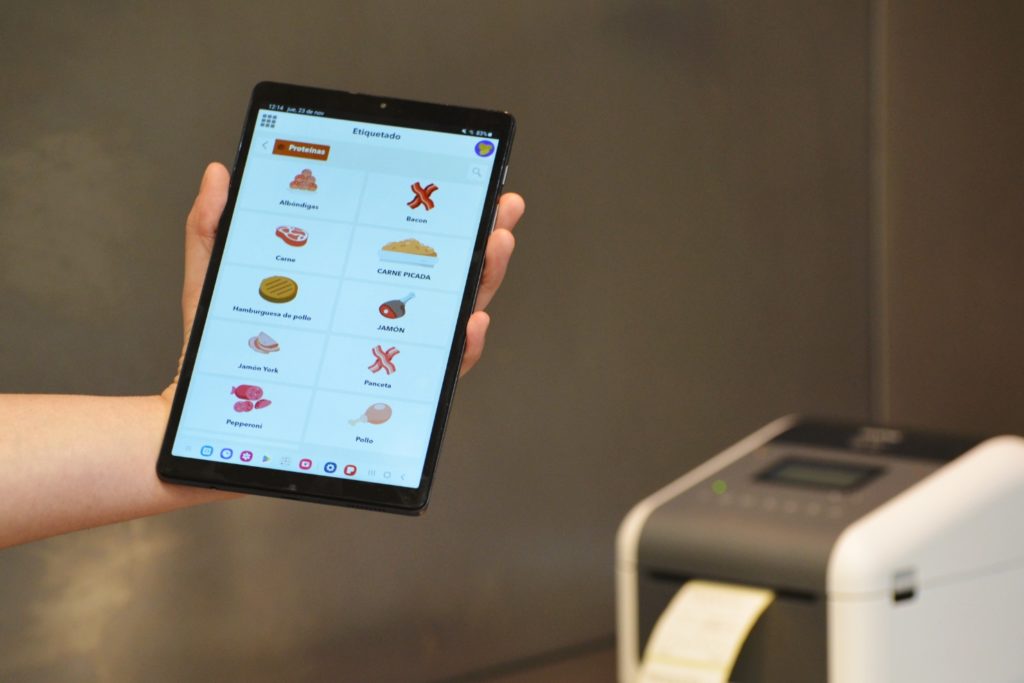Ultimate guide to a joyful Christmas free from food safety incidents!

Two things seem to increase by a 10% during Christmas: our cholesterol levels and food safety incidents in restaurants and food service businesses!
And neither results in anything good!
So, watch out!
Behind all that magic, Christmas lights, cheers and extravagant feasts, there lurk two serious threats to your health – and if you own a hospitality or food service business -, to the health of your customers!
After all – the more food you prepare this Season, the greater the risks.
The more diners, the more stress.
And the more haste, the greater the chances of making mistakes that result in serious food safety incidents!
How to prevent the inevitable challenges of the season from becoming a risk to your brand’s reputation?
Here is the ultimate guide to a happy and food safety incident-free Christmas.
What are the specific food safety risks of the holiday season?
A study conducted by the Spanish Agency for Food Safety and Nutrition (AESAN) in 2021 confirmed that the number of food alerts had increased by 10% during the Christmas week compared to the previous week.
The study focused on assessing food safety risks associated with the production, distribution, and consumption of food during the 2021 Christmas holidays. It was based on an analysis of food alerts published by AESAN, as well as a survey of food industry professionals and consumers.
The main results of the study were as follows:
- The number of food alerts increased by 10% during the Christmas week compared to the previous week.
- The main types of food alerts during Christmas were related to contamination by bacteria, such as salmonella and listeria.
- The main foods involved in food alerts were meats, seafood, and dairy products.
- The study also found that consumers were concerned about food safety during the Christmas holidays. The survey revealed that 60% of consumers were more likely to get sick from food poisoning during Christmas.
Why Are There More Alerts and Food Incidents During Christmas?
Increased Production
With a higher number of reservations for large groups, the hospitality industry prepares a greater volume of food during the Christmas festivities.
Undoubtedly, this increases the risk of cross-contamination, lack of hygiene, and the likelihood of errors in critical control points of HACCP systems.
Time Pressure
With a greater number of diners at your tables and the rush to serve them all as quickly and efficiently as possible, the risk of human errors, such as forgetting to wash hands or storing food incorrectly, increases.
Use of Special Ingredients
Traditional Christmas dishes like roasted turkey, seafood or nougat require the use of special ingredients.
These ingredients may have specific handling requirements that must be followed to ensure food safety. Additionally, the use of a larger volume of foods that are thawed, refrigerated, or stored incorrectly can pose risks.
Incorrect Handling of Raw Foods
Incorrect handling of raw foods, such as meat, seafood, or poultry, is a common risk. Exposure of foods to inappropriate temperatures due to haste, coupled with staff not always prepared to manage stressful environments, like serving 300 people during Christmas, exacerbates these risks.
Use of Larger Volumes of Foods Thawed, Refrigerated, or Stored Incorrectly
During the festive season, the demand for culinary delights often leads to handling larger quantities of food. Unfortunately, this can result in improper thawing, refrigeration, or storage practices, posing a significant risk to food safety.
Incorrect Handling of Raw Foods, such as Meat, Seafood, or Poultry
One of the critical factors contributing to food incidents is the mishandling of raw foods. Whether it’s meat, seafood, or poultry, improper practices can lead to contamination and compromise the safety of the final dishes.
Exposure of Foods to Inappropriate Temperatures Due to Haste and Unprepared Staff
The hustle and bustle of Christmas service, especially when catering to a large crowd like 300 people, can inadvertently expose foods to inadequate temperatures. The pressure, coupled with staff who may not always be adequately trained to handle stressful environments, increases the likelihood of temperature-related issues.
These challenges highlight the importance of stringent protocols for thawing, refrigerating, and storing food, as well as ensuring that all staff members are well-prepared to manage the unique demands of a bustling Christmas service. Proper training and adherence to food safety guidelines become indispensable in mitigating the risks associated with handling larger volumes of food during this festive period.
Christmas Ingredients with Higher Risk of Food Incidents
Poultry and seafood are two foods particularly susceptible to food contamination.
This is because both can harbor harmful bacteria such as salmonella, listeria, and E. coli. And, as we’ll discuss below, even the beloved nougat is not exempt.
Incorrect Handling of Poultry
Improper handling of poultry (particularly traditional Christmas Turkey) can lead to cross-contamination, where bacteria from raw food transfer to ready-to-eat food. This can happen by using the same utensils or work surfaces to handle both raw and ready-to-eat foods.
Tips for Safely Handling Poultry:
- Wash your hands with soap and water for at least 20 seconds before and after handling poultry.
- Cook poultry to an internal temperature of 74°C.
- Do not thaw poultry at room temperature.
- Keep raw poultry and ready-to-eat items separated in the refrigerator.
- Discard raw foods exposed to temperatures above 4°C for more than two hours.
Incorrect Handling of Seafood
Raw seafood may contain harmful bacteria such as salmonella, listeria, and Vibrio parahaemolyticus, leading to foodborne illnesses like salmonellosis, listeriosis, and vibriosis.
Tips for Safely Handling Seafood:
- Purchase seafood from reliable sources.
- Check expiration dates and labels on seafood.
- Cook seafood to an internal temperature of 63°C.
- Do not thaw seafood at room temperature.
- Keep raw seafood and ready-to-eat items separated in the refrigerator.
- Discard raw seafood exposed to temperatures above 4°C for more than two hours.
Take Measures to Prevent Food Incidents This Christmas!
Follow these tips for a safe, successful, and incident-free holiday season:
Create a Food Safety Plan
A food safety plan is a document outlining the procedures you will follow to ensure food safety in your restaurant or food service business. It should include protocols for receiving, storing, handling, preparing, and serving food.
Train Your Staff
Your staff is the first line of defense against food contamination. Ensure they are trained in food safety principles and are familiar with the procedures outlined in your food safety plan.
Conduct Regular Inspections
Regularly inspect your kitchen and storage facilities to identify any potential sources of contamination.
Use High-Quality Cleaning and Disinfection Tools and Equipment
Ensure that your surfaces and utensils are clean and disinfected before each use.
Maintain Food at Appropriate Temperatures
Cook food at the correct temperature and keep perishable foods refrigerated or frozen.
Be Extra Cautious with Special Ingredients!
Traditional Christmas dishes like roasted turkey or nougat have specific handling requirements that must be followed to ensure food safety.
By following these tips, you can help ensure that your business has a safe and successful holiday season!
But why not go the extra mile and offer your customers a truly unique food safety experience?
Here are some ideas:
Create a Safe Christmas Menu for Children! Children are particularly vulnerable to food poisoning. Create a safe Christmas menu for children that includes easily digestible dishes without ingredients that may cause digestive issues.
Offer Vegetarian and Vegan Options! The number of people following a vegetarian or vegan diet is growing. Offer vegetarian and vegan options so that all your customers can enjoy the Christmas festivities.
Use Local and Seasonal Ingredients! Local and seasonal ingredients are fresher and healthier than imported ones. Additionally, supporting local suppliers is an excellent way to give your business a unique festive touch.
By implementing these ideas, you can help create a safe and memorable holiday season for your customers!
Do you want to avoid food incidents and reduce your stress entirely this festive season?
Trust in Andy, just like many other leaders in organised catering and food service worldwide do!
From Starbucks to Newrest, Domino’s and many others!

Automating your food safety and labeling management is transformative for your teams, the health of your diners, and the reputation of your brand, especially during the hectic holiday season.
- Digitise your HACCP tasks and hygiene checklists.
- Digitally label the primary and secondary expiration dates of your foods.
- Monitor storage, refrigeration, and freezing temperatures, as well as during the reception process of your raw materials.
- Conduct audits of your food safety processes.
- Minimise food incidents and activate action plans.
- And many other benefits that you can discover by trying Andy for FREE!
Try Andy and revolutionise your food safety processes in 2024!

